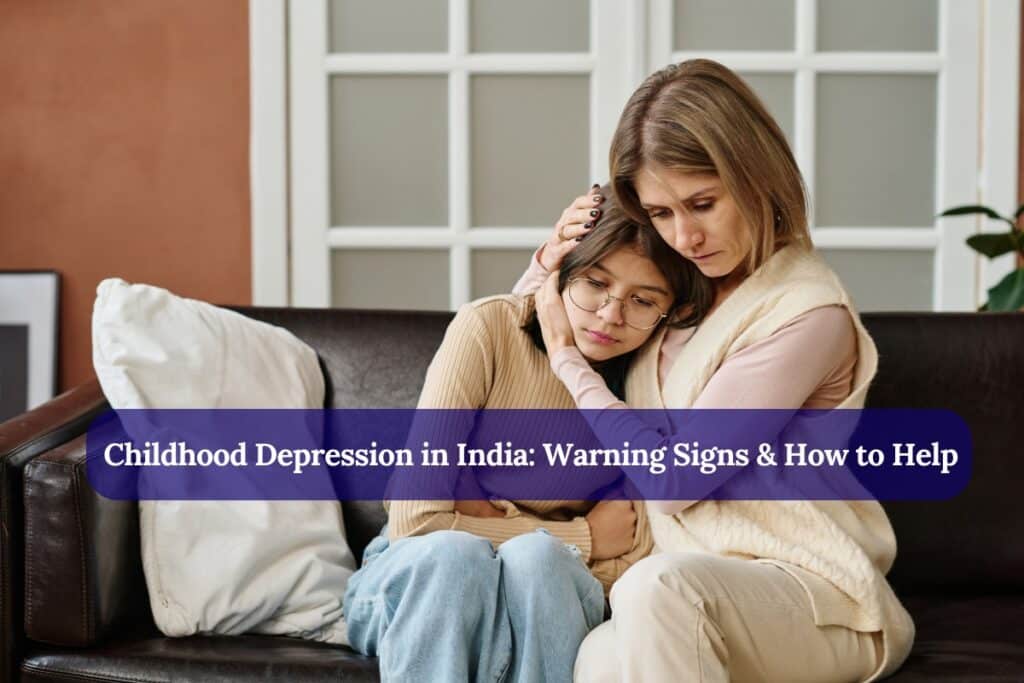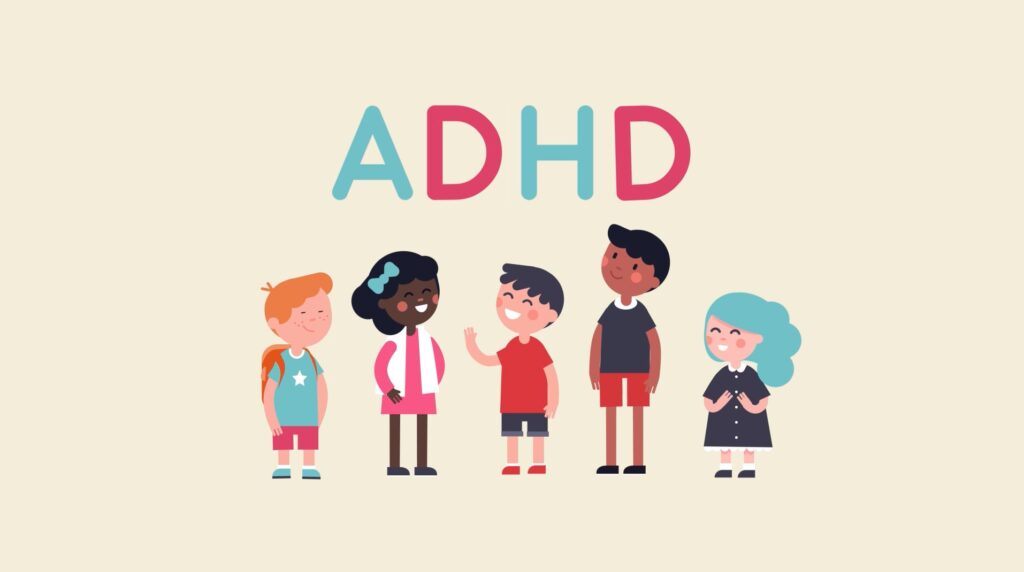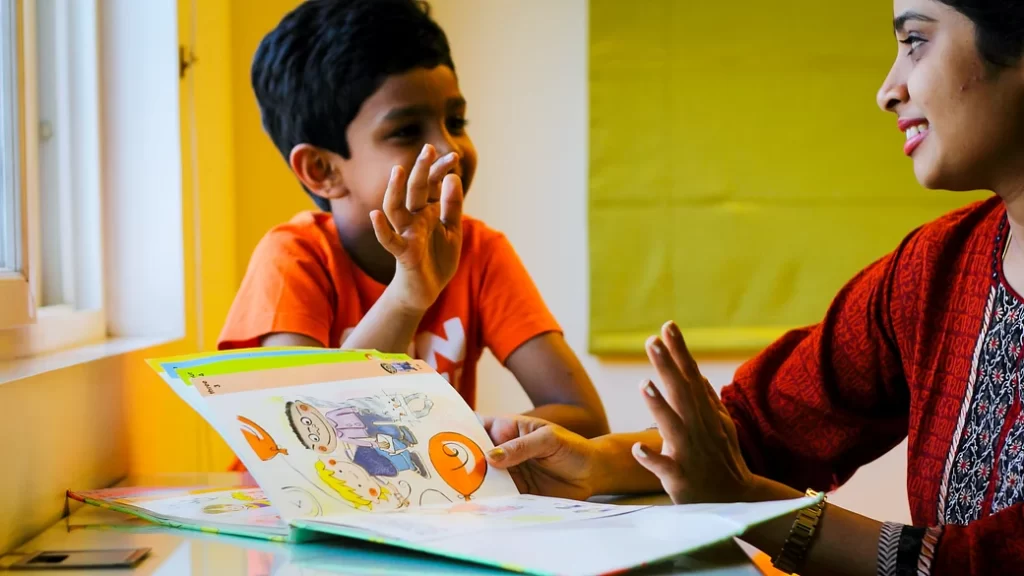Childhood depression is not rare anymore; it’s rising quietly and quickly.
Globally, around 3% of children and 13% of adolescents experience depression, according to WHO data. In India, recent studies show that 1 in 5 adolescents reports symptoms of mental distress, yet most go undiagnosed.
As a child psychologist, I’ve seen how easy it is to miss the signs. Parents often come in saying, “He’s just moody,” or “She’s always tired, maybe it’s the exams.” But when a child’s sadness or irritability lasts for weeks and begins to affect school, sleep, friendships, or self-esteem, it’s time to look deeper.
Depression in children doesn’t always look like sadness.
It can look like:
- Constant irritability
- Refusing to play or go to school
- Complaining of stomachaches or headaches every day
- Saying things like “Nobody likes me” or “I’m no good”
This article breaks down what childhood depression really looks like, why it happens, and what parents can do to support a child who may be silently struggling.
What Does Childhood Depression Look Like?
Depression in children doesn’t always look like it does in adults. Many kids don’t have the words to explain how they feel, so they show it through behaviour. Some become withdrawn and quiet, while others lash out or get angry over small things.
Here are common signs of depression in children:
- Constant irritability or mood swings
- Losing interest in play, hobbies, or friends
- Trouble sleeping or sleeping too much
- Big changes in appetite
- Frequent physical complaints (headaches, stomachaches)
- Avoiding school or social situations
- Low energy, fatigue, or “not caring” about anything
- Saying things like “I’m not good enough” or “Nobody cares”
- Crying for no clear reason
- Becoming unusually clingy or unusually distant
Some children may seem “lazy,” “unmotivated,” or “too sensitive.” In reality, they could be depressed and masking it through anger, silence, or somatic pain.
If these symptoms last more than two weeks and interfere with daily life, it’s important to seek help. Early signs often appear between ages 6 and 12, though even preschoolers can show signs of depression through constant irritability, sleep disruption, or excessive tantrums.

Can Depression Start in Childhood?
Yes, depression can start in childhood, even before the teenage years. While many people associate depression with adulthood, research shows that kids as young as 3 to 5 years old can begin to show early symptoms.
In clinical practice, we often see children in primary school who are already struggling with persistent sadness, irritability, or emotional shutdown. Many of these cases are misread as “bad behaviour,” “attention-seeking,” or “just a phase.” But when symptoms last for weeks and start to affect sleep, learning, or peer relationships, it’s no longer typical development; it’s a red flag.
Some kids are genetically predisposed. Others are reacting to stress at home, school, or from a traumatic experience. In either case, depression in childhood is real and serious, but also treatable.
Recognising it early can prevent:
- School dropouts
- Long-term emotional damage
- Anxiety or substance issues in teenage years
- Chronic depression in adulthood
What’s important is to not wait for things to “get worse.” The earlier the support, the better the outcome.

What Causes Depression in Children?
There’s no single cause of childhood depression. Instead, it’s usually triggered by a mix of emotional, environmental, and biological factors. Some kids are more vulnerable than others, especially if there’s a family history of mental health issues or early exposure to stress.
Here are some of the most common causes and risk factors:
🧠 Biological factors
Children with a family history of depression, anxiety, or bipolar disorder have a higher genetic risk. Brain chemistry particularly low levels of serotonin can also play a role in mood regulation.
🏠 Environmental stress
Major life changes or instability such as divorce, financial stress, loss of a loved one, or frequent moves can trigger depression. Even school bullying, academic pressure, or feeling rejected by peers can have a deep emotional impact.
🧍 Trauma or neglect
Childhood trauma, whether emotional, physical, or sexual, is one of the strongest links to early-onset depression. Even emotional neglect (such as feeling unseen or unsupported) can lead to low self-worth and depressive symptoms.
⚖️ Personality and temperament
Children who are naturally sensitive, perfectionistic, or self-critical may be more prone to depression especially if they internalize failure or rejection easily.
🌐 Social isolation or lack of support
Kids need connection. Feeling lonely, left out, or constantly misunderstood can quietly chip away at their emotional health.
Understanding the root causes helps parents and therapists find the right kind of treatment and emotional support early before symptoms escalate.
How Childhood Depression Affects Life Later On
Untreated childhood depression doesn’t just go away; it often grows with the child. What starts as sadness or withdrawal in early years can turn into chronic low self-esteem, social anxiety, or major depression in adulthood.
Studies show that children who struggle with depression are at higher risk of:
- Developing depression or anxiety disorders later in life
- Facing relationship difficulties due to emotional detachment or trust issues
- Struggling with school and career success from early academic setbacks
- Turning to substance abuse as a coping mechanism
- Having poor physical health, including sleep issues, fatigue, and chronic pain
- Experiencing suicidal thoughts or self-harming behaviours in adolescence or adulthood
Even mild depressive symptoms in children can leave long-term emotional scars, especially if their feelings are dismissed, misunderstood, or never addressed.
But early support makes a real difference. Children who receive therapy, validation, and coping tools early in life often grow into adults who can manage stress, regulate emotions, and build healthy relationships.

How to Treat and Support a Child With Depression
Treating childhood depression takes time, care, and the right kind of help. Every child is different what works for one may not work for another. But with early support, most children can recover and learn how to manage their emotions in healthy ways.
Here’s what treatment and support often look like:
Psychotherapy (Counselling)
Therapy is the first line of treatment for most children with depression.
- Play therapy works well for younger kids who express themselves through toys and storytelling.
- Cognitive Behavioural Therapy (CBT) helps older children and teens challenge negative thoughts, develop coping strategies, and regulate mood.
- Family therapy can help address conflicts at home and build stronger emotional support systems.
Medication (When Needed)
In moderate to severe cases, antidepressants may be prescribed. These are usually considered only when therapy alone isn’t enough. Medication should always be closely monitored by a mental health professional, especially in children and teens.
Hospitalisation (In Crisis Situations)
If a child shows signs of suicidal thoughts, self-harm, or severe emotional shutdown, temporary hospitalisation may be needed for safety and intensive care.
Emotional Support at Home
Even with professional help, what happens at home matters just as much. Here’s how you can support your child daily:
- Be patient, present, and calm even when their behaviour is confusing or frustrating
- Don’t minimise what they feel; validate their emotions without rushing to “fix” them
- Keep routines predictable but flexible
- Encourage gentle activities like drawing, music, walking, or playing
- Remind them that asking for help is a strength, not a weakness
You don’t have to do it alone. Depression is treatable, and kids respond well when they feel understood, safe, and supported.
How to Catch Childhood Depression Early (And What Actually Helps)
Most parents don’t realise it’s depression until something breaks.
Their child stops talking. Stops eating. Gets suspended from school. Or says, “I wish I wasn’t alive.”
As a psychologist, I’ve had parents cry during the first session, not because their child was acting out, but because they had no idea how long their child had been suffering quietly.
Here’s what actually makes a difference, not the “self-care” tips you’ll find on every blog, but the real stuff that works in real homes.
Your Child Needs You to Name It
Children don’t say “I’m depressed.” They say, “I’m bored,” “I don’t care,” or “I want to disappear.” Your job isn’t to fix it right away. It’s to name it.
Say: “I think you’re hurting.”
Say: “You don’t seem like yourself, and I want to understand.”
Once you say the hard thing out loud, they don’t have to carry it alone anymore.
They Watch How You Handle Emotion
Do you yell when you’re overwhelmed? Go silent? Pretend you’re fine? That’s how your child learns to handle pain. If you’ve been taught to hide your feelings, your child may do the same.
Let them see you struggle and handle it. Say, “I’m stressed today, so I’m taking a break instead of snapping. That’s how I take care of my brain.”
If They Change, Don’t Wait
Depression doesn’t usually start with “I feel sad.”
It starts with:
- “I don’t want to go to school”
- “Everyone is annoying”
- “No one cares anyway”
- Sleeping in every weekend
- Throwing away all their drawings
- Suddenly hating something they used to love
If something in your gut feels off, trust it. Parents often sense it before the school or doctor does.
Stop Saying “It’s Just a Phase”
Yes, moods shift. Yes, kids change.
But if something has lasted more than 2–3 weeks, and it’s affecting school, sleep, appetite, or relationships, that’s not just a phase. That’s a signal.
Make Help a Normal Option
Therapy should feel as normal as tutoring or a dentist visit. If your child broke their arm, you wouldn’t wait to see if it heals on its own. Don’t do that with their mental health.
Let them know:
“Talking to someone isn’t weird, it’s smart.”
“You don’t need to be ‘crazy’ to get help. You just need to be human.”
Don’t Expect Them to Come to You First
They may not say, “I need help.”
But they might say, “I’m tired of everything.”
Or, “Can I stay home today?”
Or, “Can I sit in your room for a bit?”
That’s them asking. Don’t miss it.

FAQs About Childhood Depression
What are the early signs of childhood depression?
Early signs often show up as irritability, fatigue, loss of interest in play, trouble sleeping, or physical complaints like headaches. It may not look like “sadness.” If your child says things like “Nobody likes me” or “I’m tired of everything,” take it seriously. For a broader overview of this topic, you can also refer to Childhood Depression on Wikipedia.
Can depression start in childhood?
Yes. Depression can begin as early as preschool. Many children in primary school silently deal with symptoms for months before anyone notices. That’s why early counselling like what we offer at our Child & Adolescent Clinic, can make all the difference.
How does childhood depression affect adulthood?
Children who don’t get support often grow into adults with low self-worth, difficulty regulating emotions, or trust issues. In our sessions across Delhi, Bangalore, and even Toronto, we see adults unpacking pain that started when they were 6 or 7 years old.
Can childhood trauma cause depression later in life?
Absolutely. Emotional neglect, abuse, bullying, or even the feeling of “never being good enough” can shape a child’s brain and self-esteem. Left untreated, this often turns into chronic depression in adolescence or adulthood.
How is childhood depression treated?
Usually with a combination of therapy, family support, and in some cases, medication. Our child psychologists use play therapy, CBT, and family sessions to help kids process their emotions safely. Learn more here.
Can childhood depression go away on its own?
Occasional sadness may pass, but true childhood depression rarely goes away without help. The earlier you intervene, the easier it is for your child to recover and thrive.
How do I support my child between therapy sessions?
Be consistent, listen without fixing, and validate their emotions. Keep routines steady and stay in touch with their therapist. If your child is receiving online child counselling, our therapists can guide you on what to watch for.




